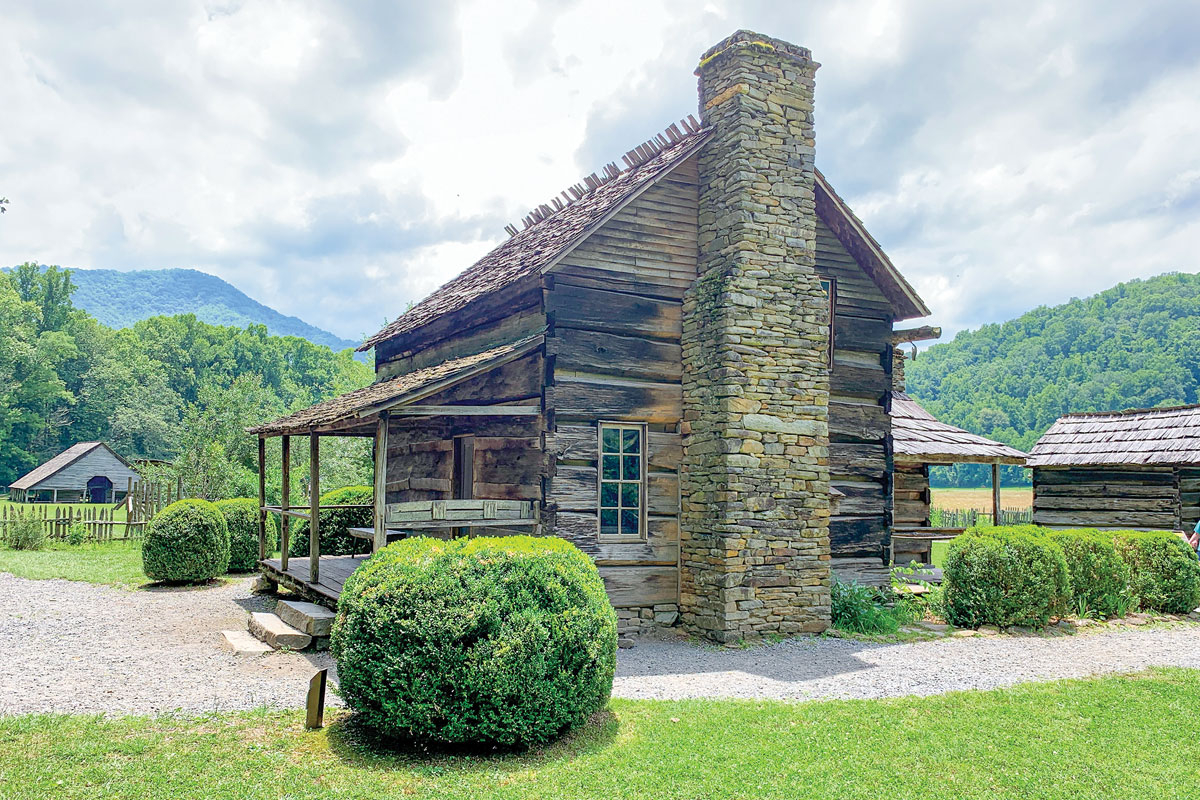Atlanta teen missing from wilderness therapy program
 It’s been more than a week since Atlanta resident Alec Lansing, 17, walked off from the group he was camping with near Heady Mountain Church Road in the Cashiers area, but rescuers are still combing the woods and trolling the skies in search of the missing teen.
It’s been more than a week since Atlanta resident Alec Lansing, 17, walked off from the group he was camping with near Heady Mountain Church Road in the Cashiers area, but rescuers are still combing the woods and trolling the skies in search of the missing teen.
Search still on for missing teen
 The search for Alec Lansing, the missing 17-year-old in Jackson County, has yet to produce any viable leads. He has not, to the best of investigators’ knowledge, contacted any family or friends, and searchers have found the reflective vest he wore as part of the wilderness therapy group he was with, apparently discarded.
The search for Alec Lansing, the missing 17-year-old in Jackson County, has yet to produce any viable leads. He has not, to the best of investigators’ knowledge, contacted any family or friends, and searchers have found the reflective vest he wore as part of the wilderness therapy group he was with, apparently discarded.
Macon, home to the AT, familiar with missing hikers searches
Responding to missing or injured hikers this time of year is expected in Macon County, where the Appalachian Trail winds through the mountains and the Nantahala National Forest makes up another substantial portion.
“Some years, at the peak (of thru-hiking) on the Appalachian Trail, we’ll get as many as three or so calls in a month from early spring for three or four months,” said David Key, director of Macon County Emergency Services.
Key said that it is easier to get lost, even on a well-marked trail such as the famous AT, than many people might believe.
“People say, ‘How in the world do you get lost?’ But it really depends on the signage. It’s hard to find your way around when you get disoriented,” Key said.
True, the trails are blazed with painted spots on tree trunks every few hundred yards along the trail. The AT is blazed with white paint spots, and the side trails in blue. But without signs of trail names, simply seeing the blazes isn’t much help.
“It’s like going into a town and all the street names are the same,” Key said. “Off the AT, all is blue, and that’s all you know. Everything is blue.”
Warren Cabe, Franklin’s fire chief, held Key’s position for many years. He too described responding to lost hiker calls, mainly involving the AT, as routine in nature. The cost, he said, isn’t easy to calculate.
SEE ALSO: Anatomy of a Smokies search
“The biggest thing is time,” Cabe said. “But the real intangible thing in Macon County is the volunteer help. It’s not a tangible cost. You’re talking time away from families and time away from jobs.”
Cabe said that fortunately most searches in Macon County that he oversaw did not last more than one, or at most two, operational periods, meaning that county staff was on the job anyway without running into overtime pay issues.
“It seems they’d almost always come in or we’d find them at about dark,” Cabe said.
The most disturbing case of a missing person on national forest lands in Macon County that Cabe remembered didn’t even involve an actual hiker.
It was a man with Alzheimer’s disease who went missing one day in the Nantahala National Forest. Search parties later found his car, burned with the body inside, tucked away on a forest service road. Cabe believes the fire was from some sort of mechanical malfunction with the vehicle, though questions obviously still remain unanswered.
SEE ALSO: Motives of missing man remain a mystery
Additionally, he said, Macon County over the years has lost one or two hikers to hypothermia in the Highlands area, where the elevations can pose a problem, and quickly, for those unprepared for the weather challenges.
Anatomy of a Smokies search
Things weren’t looking good. After five days of searching and zero clues, a massive search for a missing man in the Great Smoky Mountain National Park was at a critical juncture.
“Let’s try to make another hard push for this guy today,” Joe Ponds, a supervisory park ranger, told a group of about 60 search-and-rescuers gathered near a makeshift command center last Thursday morning, March 22.
Searchers were upbeat that today would be the day — the day they would get a break in the search, that they would find their guy or at the very least, a sign that he was still out there.
Marching orders were clear. Check all natural or manmade shelters. Talk to anyone and everyone they saw. Keep their eyes peeled for any leads — such as a reported sighting or a Camel Crush cigarette butt, the brand Derek Lueking smoked.
Following the daily pep talk, nearly three dozen searchers split into 14 teams to begin the sixth day of combing through the densely forested national park where Lueking, 24, of Louisville, Tenn., disappeared that previous Saturday morning.
Hope was still alive that Lueking would be found. The unseasonably warm weather has given him a better chance at survival than typically afforded lost hikers this time of year.
SEE ALSO: Motives of missing man remain a mystery
But, one cannot ignore the fact that by day six, most lost hikers would have already been found. Searchers believed Lueking was ill prepared for an extended trip into the woods, taking nothing more than a daypack with him.
At this point, about 90 percent of missing hiker cases have resolved themselves — either the search team finds the person or they emerge from the woods on their own, said Bob Miller, a spokesman for the Great Smoky Mountain National Park.
There is no set number of days, however, when search crews decide it’s time to pull the plug. As long as there are leads, the park rangers would keep at it.
The search employed both human and dog trackers. The human trackers look for broken branches, footprints or any other signs that indicate that someone had recently traveled through the area.
The rangers gave the dog trackers a whiff of Lueking’s clothing at the start of every day to ingrain them with his scent, which the canines attempted to ferret out in the woods.
But ultimately, the search would be called off the next day, with Lueking still missing.
“It is very disheartening for the searchers to work so hard for so long to find a missing individual without success,” said Dale Ditmanson, superintendent at the Great Smoky Mountains National Park.
As of Friday afternoon, March 23, searchers had not found a single clue, beyond Lueking’s vehicle, that it could conclusively tie to the missing man.
“Without clues, you are just kind of searching in the woods,” said Molly Schroer, a spokeswoman for the park.
Going off-trail
Contrary to searches dramatized on television, rangers don’t walk side-by-side in a chain calling the missing person’s name. They have a deliberate road map for how and where they will look.
In most cases, people lost in the woods stay on the trail. It is only a matter of time before park rangers catch up to them, or they find their way to a trailhead.
During the Lueking search, teams hiked about 55 miles of trails that radiate from Newfound Gap, including parts of the Appalachian Trail. Once they checked all the obvious places, the search moved off-trail — making it trickier and more difficult.
Finding a person in a wilderness of half a million acres, steep slopes, thick ravines and rugged rock outcrops is like trying to find a needle in haystack.
The searchers look for “places where it would be appealing to get off-trail,” Miller said. When they see one of those alluring spots, the hikers walk “until it becomes really unpleasant” or rather, reach an area where no human could safely traverse.
As they travel each unmarked route, the rangers denote it on a GIS-based map so the other teams don’t waste time surveying the same area. The maps of where they have been and where they still need to go allow the teams to systematically search the dense forest and ensure that they are doing their best to locate a missing person.
And, rain or shine, the manhunt continues until all the clues dry up. But, even after an official search concludes, rangers will still keep an eye out.
“You never really give up,” Miller said. “People are pretty resourceful.”
SEE ALSO: Macon familiar with missing hiker searches
When a search is in full swing, the search teams convene every morning at 8 a.m. sharp to review a game plan for the day. Operations are coordinated from makeshift command post set-up at the trailhead where the person was last seen — in this case, the Newfound Gap parking lot on U.S. 441.
In addition to personnel from the national park, searchers from the Blue Ridge Parkway, Cherokee Tribal EMS and the North Carolina and South Carolina search and rescue dog associations, among others, joined the hunt for Lueking. The North Carolina and Tennessee highway patrols offered helicopter services for several days at no cost to the national park service.
Every day, rangers survey maps to see what areas they have covered and which they haven’t. Tasks are numbered in order of importance and slowly whittled down during the day and in some cases, added to as searchers uncover possible clues.
“Each day, you look at the intelligence and the personal information that the family and others might provide on his behavior,” Miller said.
What land is traversed is just as important to the search as what areas are not. Some parts of the national park are too unpleasant for anyone to hike and get eliminated as a possible route of the missing person.
“You are not searching 90 percent of the land in this situation,” Miller said.
Still, the remaining thousands of acres of wilderness are daunting enough. Given the terrain, a voice hollering for help carries a quarter-mile at best. If the missing person is unconscious, hurt or unable to call for help, it takes a lot of instinct and some luck to stagger upon someone in the vast Smokies.
Each new day gives park rangers an opportunity to follow up on leads that they did not get to the previous day because they had other duties to fulfill. On occasion, rangers will report back a fresh lead or dog hit, when a canine latches on to a scent.
Leaders at the command center will decide if a lead is strong enough to be investigated immediately. In those cases, a group of unassigned rangers will “hot foot” it out to the site of the clue and follow it until it leads to another clue or goes cold, Miller said.
During the Lueking search, a helicopter spotted a tarp near Deep Creek, and a team was quickly dispatched to check it out. But, the equipment looked as if it had been in place for a long time, and there were no signs linking it to Lueking.
If a clue is found, searchers must then put themselves into the lost individual’s boots.
“Where would I go?” Miller said. “A lot of it goes down to looking at the terrain.”
An elderly man is most likely going to travel downhill, taking the path of least resistance, rather battle his way through brush and thicket uphill, the route a younger hiker would likely choose.
“A 14-year-old boy is more likely to bushwhack straight up hill rather than a 60-year-old man,” Miller said.
During the Thursday morning briefing, each speaker emphasized two things — their gratitude to all the searchers and safety first.
“The very first priority in this search is the safety of your searchers,” Miller said.
Everyone was encouraged to partner with someone whom he or she would be responsible for keeping tabs on during the day.
After a full day of hiking without results, the teams return to home base, in this case Newfound Gap, between 5:30 and 6 p.m. The search parties, tired and ragged, are debriefed while the day’s events are still fresh in their minds.
“The result of one day’s activities is the foundation of the next day’s search plans,” Miller said.
One of many searches
The national park conducts anywhere from 80 to 100 searches each year — most of which end happily.
It is unknown how much money was spent searching for Lueking, but $25,000 to $50,000 is not uncommon, Miller said. A three-day, 300-person search for a South Florida boy nearly a decade ago cost $300,000.
Each national park has money set aside for such operations. However, once the cost exceeds $500 per searcher, the park kicks its future costs up the chain to its regional office in Atlanta. For particularly expensive and extensive searches, the Atlanta office will pass costs to a contingency fund dedicated especially for search and rescue operations that can be tapped by any of the U.S. national parks.
The search for Lueking is larger than the average search conducted by the park. A search of this scale only comes around once every three years or so, Miller said.
About 45 national park employees played a part in the Lueking search, along with roughly 15 volunteers. Most of the volunteers spent their time passing out flyers and talking to hikers emerging from or entering trailheads. Volunteers do not usually have the experience required to hike off-trail, which is unmarked, heavily thicketed and sometimes treacherous.
Nearly a decade ago, a 6-year-old boy from South Florida was walking to Clingmans Dome with his family. When he walked off, his family initially assumed that the child was answering the call of nature. But, when he did not return soon after, the park rangers issued an alert and quickly began looking high and low for him.
During the three-day search, some sheriff deputies from South Florida came up to North Carolina to help. Although all the men were strong and fit, they did not last more than an hour on the trails before returning to the command center. Hiking takes a different kind of strength that the deputies did not have had.
“You can’t just take anybody who comes in off the street,” Miller said.
Turns out the young boy had hiked more than 10 miles on the nearby Appalachian Trail before wandering off trail. He was found three days later eating blueberries and drinking water from a stream.
Motives of missing man remain a mystery
It’s probably not the view sightseers in the Great Smoky Mountains National Park were expecting last week when they pulled into the park’s most popular overlook at Newfound Gap, a 5,000-foot mountain pass traversed by the main road through the park.
Instead of the standard photo-op of sweeping vistas and endless ridgelines, visitors were greeted by a blue minivan, decorated with “Find Derek” signs, pictures of a missing son and his teddy bear sporting a plaid and red bowtie.
The family of Derek Joseph Lueking spent their days last week pressing flyers with his photo into the hands of anyone who would take them. They were there all night sometimes, too, looking out at the mountains for the glimmer of a small campfire that just might belong to Lueking. In particular, they pleaded with anyone setting out on the trails to be on the lookout.
“We tackle the hikers,” said Tim Lueking, Derek’s father.
Every hiker is another set of eyes — another person looking for his missing son, Tim said. Some of the hikers emerging from the trailheads caused them to do a double take, for a half second thinking, wishing, it could be Lueking.
Lueking, a 24-year-old from Louisville, Tenn., isn’t your typical lost hiker. Most search and rescue missions are launched after a hiker fails to come home after a day in the woods or doesn’t show up at the appointed hour after a camping trip.
But, Lueking went missing before he ever set foot in the park. His family grew worried when he didn’t show up for work and stopped returning their phone calls.
“They had been trying to find him. He had not been acting in a normal way,” said Molly Schroer, a spokeswoman for the park.
SEE ALSO: Macon familiar with missing hiker searches
Two days passed before his parents discovered he was staying at a hotel in Cherokee. Concerned, they set out for Cherokee in hopes of finding him, but they arrived too late.
He had checked out at 4 a.m. the morning of Saturday, March 17. He was last seen on the hotel surveillance cameras with a daypack.
On the drive back toward Tennessee, his family spied his white Ford Escape in the Newfound Gap parking lot and convinced rangers to launch a search immediately.
Park rangers questioned park visitors and hikers in the area about Lueking to no avail. And, the search teams traversed more than 50 miles of trail radiating from Newfound Gap during the first two days before moving the search off-trail.
Needle in a haystack
The most “disturbing” thing about Lueking’s disappearance is that no one they talked to Saturday had seen him, said Bob Miller, a spokesman for the Great Smoky Mountain National Park.
“There was a ton of people in the park that day. It was a nice day,” Miller said. “Does it mean he got off the trail right away? Maybe.”
Had he been on the trails, someone, somewhere would have seen him. But, off-trail is another story. Once off-trail, only the most experienced outdoorsmen can successfully navigate the Smokies’ half-million acres of wilderness, steep terrain and dense forests. Lueking, by all accounts, was not in this category.
Going off-trail not only increased Lueking’s chance of getting lost or injured but decreased his chance of being found.
Rangers are not sure what gear Lueking had with him beyond the generic term “daypack.”
“It’s whatever you put in it,” Miller said.
SEE ALSO: Anatomy of a Smokies search
What the park does know is what Lueking did not have on him — a tent, sleeping bag, his wallet, cash and other newly purchased backcountry gear found in his vehicle at in the parking lot at Newfound Gap.
Lueking would sometimes go on day hikes but rarely went out for several days at a time and was not adequately prepared for such an endeavor when he left the Newfound Gap parking lot Saturday morning.
“We would have felt better if he had bought all this gear and brought it with him,” Miller said. “In this case, he made preparations, but he didn’t follow through.”
If that weren’t puzzling enough, Lueking also left a message in his car that read: Don’t try to follow me. The ambiguous note still left park leaders wondering what Lueking was thinking when he wandered into the forest.
“He could have been going just to clear his mind. He could have been going with an intention to harm himself,” Schroer said.
The family told park rangers that the date of his disappearance fell around the one-year anniversary mark of the death of his grandfather whom he had been very close to — and one possible reason why he went missing.
Real-life wilderness reality show?
Lueking was also a fan of ‘Man v. Wild.’ In each show, host Bear Gryllis is dropped into the wilderness with limited resources and forced to survive on the land while finding his way back to civilization. It has been postulated that Lueking may have been in search of a similar experience.
“It opens up one more scenario,” Miller said. “If somebody’s trying to avoid you, they could do it.”
While most rangers dedicated to the search effort spent their days combing the trails, one of the rangers assigned to the search, Caitlin Worth, spent most of her time with the family, keeping their spirits up.
“Stay up beat; stay positive; keep talking to people,” Worth said Thursday of her advice to the Lueking family. “Stay positive until we tell you a reason not to be.”
One of the worst things for the family members to do is hang their hats on each tidbit of information, be it positive or negative.
“Don’t get on that roller coaster of the up and down,” Worth said.
Park rangers kept the Luekings informed of their actions — where they looked, what they found.
“They are looking hard. We really appreciate their efforts,” Tim said.
However, as time wears on, it’s difficult not to grow increasingly more concerned.
“As it gets longer, you get a little more worried,” Tim said.
After park leaders decided to scale back the search Friday afternoon, the Lueking family, with help from more than 25 civilian volunteers, continued looking for two more days.
“It just doesn’t seem to be the case that he is not in the park,” Tim said Thursday. “We still think he’s here.”
Lueking is still missing.
He is 5-foot 11-inches tall and 220 pounds with short brown hair and a short beard. He has the Japanese symbols for ‘life’ tattooed on the left side of his chest and was last seen wearing black track pants, white tennis shoes and a shirt. Lueking was possibly carrying a Realtree camouflage rain gear suit.
Another day, another search
While the Great Smoky Mountain National Park was in the throws of a massive search for a missing man thought to have disappeared into the backcountry last week, news that a second person might be missing in the park had rangers carrying out two searches simultaneously.
The second man was not a hiker nor outdoorsman but was suspected of possibly being in the park after his car was left at a parking area for two days.
Michael Giovanni Cocchini, 23, of Nashville, had been staying in Gatlinburg and was last seen by friends at 2 p.m. on Sunday, March 18, at the Walmart in Sevierville. His car was first noticed by rangers at a parking area near the park visitor center outside Gatlinburg that same day. No long-distance hiking trails leave from the parking lot, and Cocchini is not known to be a hiker and had no gear for hiking or overnight camping.
So when his car was still in the same spot two days later, rangers initiated a search. He is 6 feet tall, weighs 160 pounds, and has short black hair and a scruffy beard. He was last seen wearing blue jeans, a white t-shirt and gray or silver tennis shoes with blue stripes. Although he was reportedly sighted in Gatlinburg, it is still unknown if he did in fact walk or hitchhike back to Gatlinburg.






















